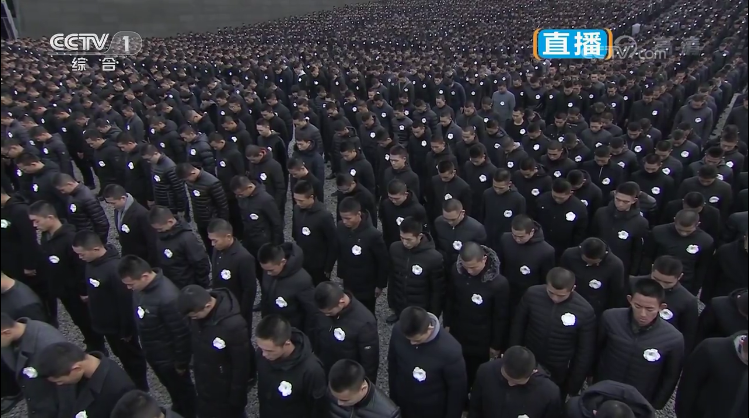



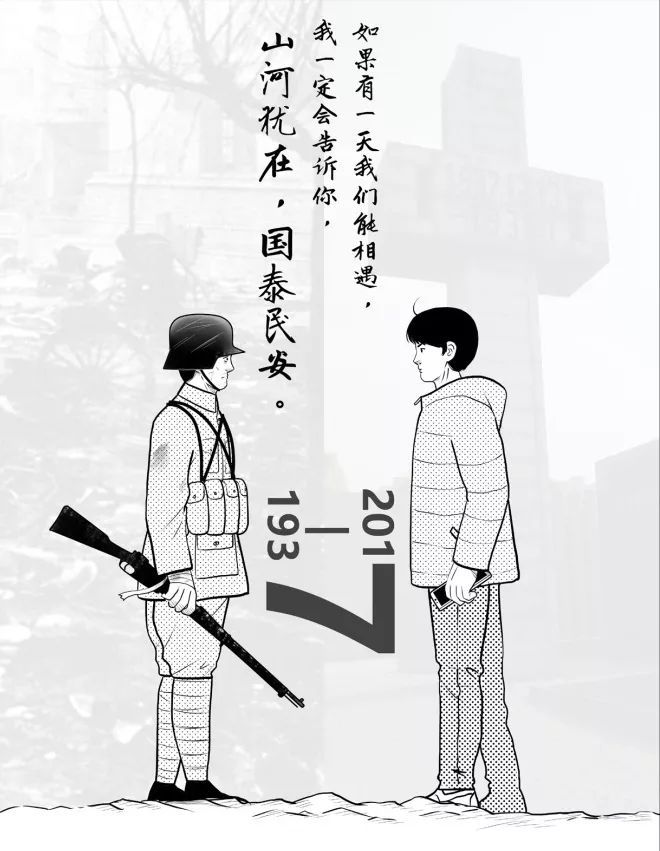
Hold Infinity In The Palm Of Your Hand , And Eternity In An Hour .













Soldiers hold (from left) the flag of the People's Liberation Army, the Chinese national flag, and the flag of the Communist Party of China during a military parade on Sunday to mark the 90th founding anniversary of the PLA in Zhurihe, Inner Mongolia Autonomous Region. Photo: Xinhua

J-20 stealth fighter planes fly over the parade ground. Photo: Xinhua

A formation of 99A tanks rolls over in the parade. Photo: Xinhua

Soldiers shout slogans during the inspection. Photo: Xinhua

Military helicopters fly over tanks and rocket launch vehicles during the parade. Photo: Xinhua
Ankit Panda writes that each choice Bhutan makes during the protracted China-India dispute could chart its place in Asia for decades to come
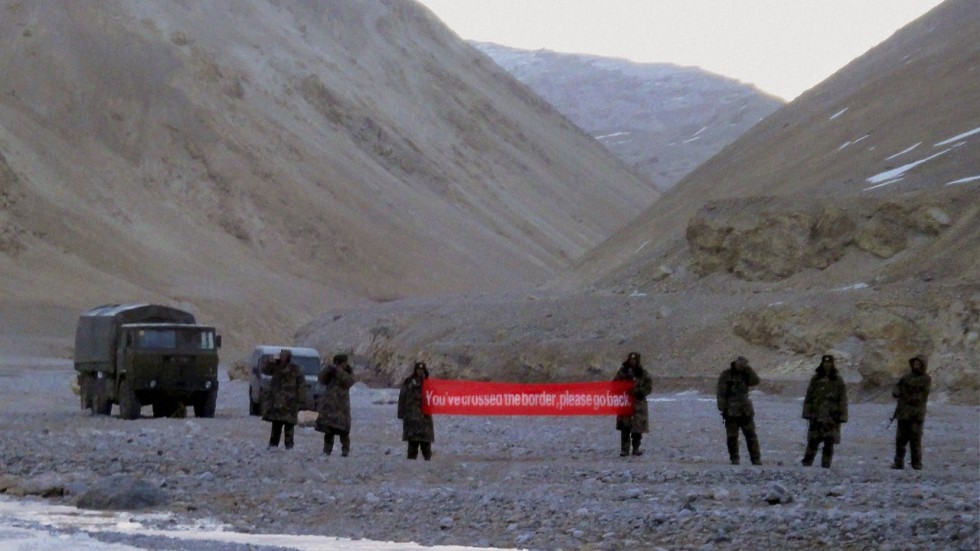
A range of factors have made this incident the most serious such stand-off between the two nuclear-armed Asian giants, who are no strangers to border incidents. Both saw serious encounters in 2013 and 2014 in the Kashmir sector of their disputed border.
First, from the Chinese perspective, the Indian army transgressed international norms by crossing what is seen as a settled international boundary to intervene on territory disputed between a third country and China. This is the first time Indian troops have engaged China from the soil of a third country.
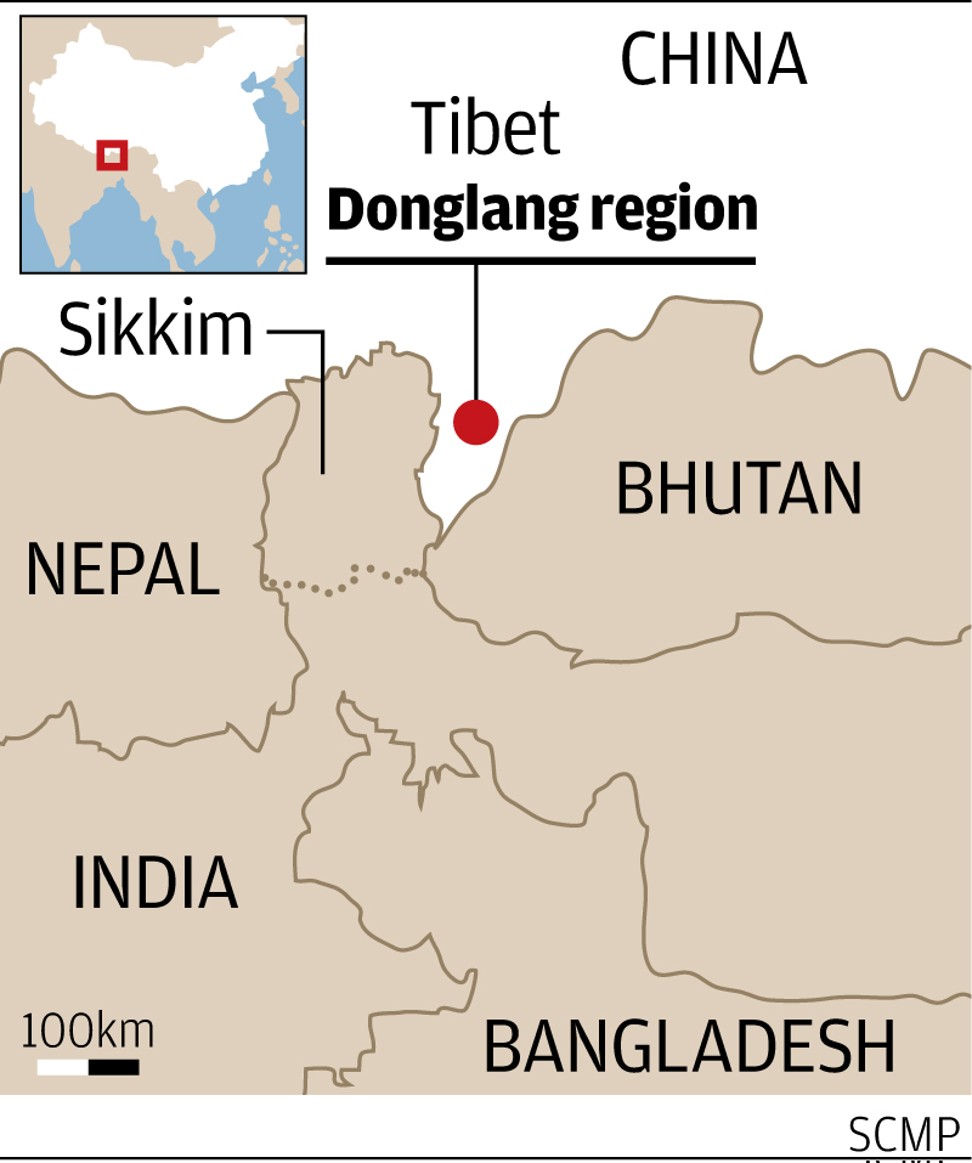
China was seemingly taken aback by the Indian Army's response in mid-June, which it claims involved the bulldozing of certain road features it had already constructed. In the weeks since, China's official reaction, accompanied by state media, has suggested a state of frenzy, with frequent references to the "lesson" of 1962, when China defeated India in a major war.
Second, in the Indian view, matters are more subtle. New Delhi concurs that it and Beijing have agreed that the Himalayan ridge line in the area should form the basis of a final border, but that border has yet to be finally demarcated and delineated.
From the Indian perspective too, there is ample reason for the intervention. The People's Liberation Army's alleged plans to extend a road – the spark for the stand-off – was seen as both threatening to India's security interests in the region and Bhutan's sovereignty.
Third, India and Bhutan have maintained a special relationship where Delhi exercised considerable persuasive power over the small Himalayan kingdom's foreign and security policy from 1949 on, under a treaty of friendship. That agreement was revisited in 2007 to grant the Bhutanese great autonomy as the kingdom transitioned from an absolute monarchy to a parliamentary monarchy.
Caught between two giants, Bhutan, with the exception of issuing a demarche to Beijing and a short statement, has maintained its silence.
As July 2017 comes to a close, the situation at Doklam appears to be stable and tense, with neither side likely to escalate matters soon. India continues to defy a Chinese ultimatum that diplomacy can only take place once Indian troops withdraw to their side of the Himalayan ridge line.
If China does escalate, it may choose to do so in another sector. Perhaps China's military may take steps to seize territory on the Indian side of the Line of Actual Control in eastern Ladakh. In the meantime, the longer the stand-off persists, the more unilateral drawdown becomes an unappetising loss of face for either side.
Neither of these proud and rising Asian powers wants to be seen as capitulating in a scenario where both sides are convinced of the fundamental righteousness of their positions. Ultimately, it comes down to complex hermeneutics around a 1890 convention between British India and the Qing Empire and subsequent agreements, including a non-public 2012 agreement in which India claims China would agree to resolve outstanding triboundary disputes in consultation with the concerned third parties – Bhutan, in this case.
Bhutan, China's only neighbour with which it has no diplomatic ties, has engaged in 24 rounds of border negotiations with Beijing. Doklam is not the only sector where Bhutan and China have disputes and, while the sector matters immensely for India, where it is seen as a natural bulwark against the PLA's access to the vulnerable Siliguri corridor, for Bhutan, there are good reasons to allow favourable concessions to China at Doklam.
China will protect border with India 'at all costs'
In 2005, Bhutan, then still obliged to defer to Delhi on matters of foreign and security policy, reportedly had made important unilateral concessions toward China that left Indian policymakers livid. Though the exact offer remains secret, it is likely that Beijing offered to settle for a small concession at Doklam in exchange for Bhutan's gaining a wider swathe of territory in the north and east.
Are China-India trade ties turning sour amid border standoff?
Though the 2005 matter was hardly reported and managed carefully between India and Bhutan behind the scenes, it leaves the sense that Thimphu is the key to the ongoing stand-off. If the PLA's move to extend the road in June was more than tactical, it may have sought to highlight the growing schism between India and one of its closest allies and neighbours.
Bhutan's incentives to defect on the Doklam question will now receive intense attention during next year's parliamentary elections in the country too. If the India-China stand-off lasts through the winter – and it will likely last a good deal longer as China's 19th Party Congress approaches – the matter could grow increasingly uncomfortable for India.
And so the stand-off at Doklam will simmer on between India, China and Bhutan, likely maintaining its ongoing ossified state well into the winter of 2017. For India and China, the Doklam stand-off has metastasised into another bit of geopolitical competition between two aspirational giants.
For tiny Bhutan in the meantime, each choice made during this stand-off could well end up charting its place in Asia for decades to come.
India has been brought down to its knees by China over the India-China border row, but is this the collapse of New Delhi?
As Indian and Chinese troops remain locked in a heated India-China border row, India's stubborn position could lead to an all-out war between the world's two most populous nations. While tensions between New Delhi and Beijing show no signs of going away, the border dispute that flared up last month could become an existential catastrophe for India, if the conflict evolves into war.

The India-China border dispute began in June when Beijing ordered to construct a road in its disputed area with Bhutan, the Doklam Plateau in Tibet. Bhutan is a small kingdom run under the influence of India – its major ally – but its borders do not have any contact with India, which sent its troops into Bhutan to prevent the road's construction. New Delhi views the road construction as Beijing asserting sovereignty and further expanding its hegemony in the region.
In what has become the worst stand-off between Chinese and Indian troops on the borderline in decades, there is no end to the conflict in sight. India refuses to withdraw its troops from the territory, while China says there will be no negotiations until after India troops have left the territory.
Although the two nations have engaged in the India-China borderline rows for many decades – and even fought the Sino-Indian war in 1962, which ended in India's humiliating defeat – it is surprising to many that New Delhi is willing to risk another war with the world's largest military over a border dispute in Bhutan.
After all, China's annual defense spending dwarfs India's, $216 billion to $56 billion. One can argue that New Delhi is in no position to dictate its own rules, but the Indian side continues stubbornly standing its ground.
Fears of an India-China war keep mounting, as Beijing has made it crystal clear that it will not sit at one table with the Indians if their troops do not leave the disputed territory. After all, Indian soldiers were the first ones to enter the Doklam Plateau illegally, which ignited the heated border row between the two nations in the first place. While New Delhi insists it was trying to stop China from asserting sovereignty on the disputed area, Beijing further tightened its grip on the area by sending more troops and is adamant to not give up.
If China's position in the South China Sea is any indication, Beijing always goes the extra mile to get what it wants when it comes to protecting its national interests. The Chinese government has even reportedly moved a number of military gear to the border to be better equipped for any solution of the India-China border row, including a military one.
However, if the Chinese do resort to force, history may repeat itself. But India has so much more to lose in 2017 than it did in 1962.
Despite China clearly having an edge in pretty much all fields of the military, India is reportedly stepping up military preparations on the borderline. While the Chinese and Indian soldiers have not fired a single bullet yet, the border row could escalate quickly, as it did in 1962. Interestingly, a road construction was one of the triggers that led to the devastating Sino-Indian war more than five decades ago.
Although New Delhi and Beijing have been reportedly communicating with each other through various diplomatic channels, the two nations still continue building up forces along the border. Earlier this week, Chinese state-run newspaper Global Times insisted that China would safeguard its security interests at "any cost" as its sovereignty was "indomitable" in the India-China border row.
If India and China resort to weapons to resolve the border dispute in Bhutan, it is fair to say that a war between the world's two most populous countries – with over 2.6 billion people combined – would be the most devastating and catastrophic in history. If the two arch rivals use nuclear weapons, the consequences would be deadly for the whole world, not just Asia.
China's nuclear arsenal accounts for more than 270 nuclear warheads, while New Delhi owns about 130 nuclear missiles, according to recent estimations by the Arms Control Association.
At this point, China seems adamant to take any measures to defend its sovereignty and territorial integrity in the India-China border row, which is the worst stand-off between the two countries in decades. A potential military confrontation between the two key Asian powers could pose not only a major threat to the stability and safety of South Asia, but also spill over and become a global catastrophe.
India seems stubborn in its position to not withdraw troops from the Doklam Plateau, as such a decision would paint the nation as weak and unable to stand its ground. Being viewed as weak is the last thing New Delhi wants at the time when there is a risk of losing territory claims on the northwestern border with Pakistan.
Pakistan, which has engaged in separate territorial disputes with India, and China are long-time allies and their diplomatic, economic and military cooperation has soared over the past years. If China taking up weapons against India would be enough trouble for the Indians, Pakistan joining its long-time ally would be a catastrophe for New Delhi.
India, which could be on the verge of an internal crisis over the growing anger of Muslims in the Hinduism-majority country, is not willing to back off in the India-China border row. But if New Delhi does not withdraw its troops from the disputed area to lay out the groundwork for negotiations with China, the consequences could be tragic for the 1.324 billion-populated country.
Earlier this week, Indian Muslims woke up to the brutal realization that a Muslim genocide may be happening in India, where roughly 172 million people living in India identify themselves as adherents of Islam. A disturbing video showing about a dozen men barbarically lynching a Muslim man leaked on the Internet.
There is an ongoing debate about the identity of the victim. With Indian media and police claiming it was a gangster, who was killed by a rival gang, international journalists believe it was a Muslim bodybuilder, who was brutally killed in a gruesome religion-motivated assault.
Earlier this month, the Indian Express published a lengthy op-ed called "Inside the mind of the Indian Muslim," where it said that the Indian Muslims are "cornered and demonized" and dealing with "a silent, undeclared psychological war that the State has unleashed on it." The article detailed how Indian Muslims are living in constant fear in the nation, where lynching of Muslim people have reportedly been on the rise lately.
In addition to the volatile external crisis on the India-China border, New Delhi could also be dealing with an internal one. If those millions of Muslims living in India rise in revolt against the alleged Muslim genocide, it could become the fall of New Delhi.

Every schoolboy used to know that at the height of the empire, almost a quarter of the atlas was coloured pink, showing the extent of British rule.
But that oft recited fact dramatically understates the remarkable global reach achieved by this country.
A new study has found that at various times the British have invaded almost 90 per cent of the countries around the globe.
The analysis of the histories of the almost 200 countries in the world found only 22 which have never experienced an invasion by the British.
Among this select group of nations are far-off destinations such as Guatemala, Tajikistan and the Marshall Islands, as well some slightly closer to home, such as Luxembourg.
The analysis is contained in a new book, All the Countries We've Ever Invaded: And the Few We Never Got Round To.
Stuart Laycock, the author, has worked his way around the globe, through each country alphabetically, researching its history to establish whether, at any point, they have experienced an incursion by Britain.
Only a comparatively small proportion of the total in Mr Laycock's list of invaded states actually formed an official part of the empire.
The remainder have been included because the British were found to have achieved some sort of military presence in the territory – however transitory – either through force, the threat of force, negotiation or payment.
Incursions by British pirates, privateers or armed explorers have also been included, provided they were operating with the approval of their government.
So, many countries which once formed part of the Spanish empire and seem to have little historical connection with the UK, such as Costa Rica, Ecuador and El Salvador, make the list because of the repeated raids they suffered from state-sanctioned British sailors.
Among some of the perhaps surprising entries on the list are:
* Cuba, where in 1741, a force under Admiral Edward Vernon stormed ashore at Guantánamo Bay. He renamed it Cumberland Bay, before being forced to withdraw in the face of hostile locals and an outbreak of disease among his men. Twenty one years later, Havana and a large part of the island fell to the British after a bloody siege, only to be handed back to the Spanish in 1763, along with another unlikely British possession, the Philippines, in exchange for Florida and Minorca.
*Iceland, invaded in 1940 by the British after the neutral nation refused to enter the war on the Allies side. The invasion force, of 745 marines, met with strong protest from the Iceland government, but no resistance.
* Vietnam, which has experienced repeated incursions by the British since the seventeenth century. The most recent – from 1945 to 1946 – saw the British fight a campaign for control of the country against communists, in a war that has been overshadowed by later conflicts involving first the French and then Americans.
It is thought to be the first time such a list has been compiled.
Mr Laycock, who has previously published books on Roman history, began the unusual quest after being asked by his 11-year-old son, Frederick, how many countries the British had invaded.
After almost two years of research he said he was shocked by the answer. "I was absolutely staggered when I reached the total. I like to think I have a relatively good general knowledge. But there are places where it hadn't occurred to me that these things had ever happened. It shocked me.
"Other countries could write similar books – but they would be much shorter. I don't think anyone could match this, although the Americans had a later start and have been working hard on it in the twentieth century."
The only other nation which has achieved anything approaching the British total, Mr Laycock said, is France – which also holds the unfortunate record for having endured the most British invasions. "I realise people may argue with some of my reasons, but it is intended to prompt debate," he added.
He believes the actual figure may well be higher and is inviting the public to get in touch to provide evidence of other invasions.
In the case of Mongolia, for instance – one of the 22 nations "not invaded", according to the book – he believes it possible that there could have been a British invasion, but could find no direct proof.
The country was caught up in the turmoil following the Russian Revolution, in which the British and other powers intervened. Mr Laycock found evidence of a British military mission in Russia approximately 50 miles from the Mongolian border, but could not establish whether it got any closer.
The research lists countries based on their current national boundaries and names. Many of the invasions took place when these did not apply.
The research covered the 192 other UN member states as well as the Vatican City and Kosovo, which are not member states, but are recognised by the UK government as independent states.
The earliest invasion launched from these islands was an incursion into Gaul – now France – at the end of the second century. Clodius Albinus led an army, thought to include many Britons, across the Channel in an attempt to seize the imperial throne. The force was defeated in 197 at Lyon.
Mr Laycock added: "On one level, for the British, it is quite amazing and quite humbling, that this is all part of our history, but clearly there are parts of our history that we are less proud of. The book is not intended as any kind of moral judgement on our history or our empire. It is meant as a light-hearted bit of fun."
The countries never invaded by the British:
Andorra
Belarus
Bolivia
Burundi
Central African Republic
Chad
Congo, Republic of
Guatemala
Ivory Coast
Kyrgyzstan
Liechtenstein
Luxembourg
Mali
Marshall Islands
Monaco
Mongolia
Paraguay
Sao Tome and Principe
Sweden
Tajikistan
Uzbekistan
Vatican City

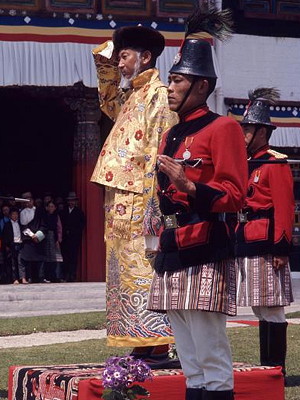
The modalities of Sikkim's absorption certainly lacked the finesse and diplomatic sheen that the External Affairs Ministry under Sardar Swaran Singh is credited with by the Sardar's admirers. It was a sneaky and cynical act of consummation of a process that had been going on ever since independence, a process marked by twists and turns and periods of lying low and edging forward.
Consider the essential scenario: Sikkim, a 'protectorate' inherited from the British, is brought closer to India by the unequal treaty of 1950. Its constitutional and political status is left indeterminate; its sovereignty open to interpretation. After 1954, the official maps published by the Government of India depart from British practice and begin to show not merely Sikkim, but even Bhutan, within India's borders. Notwithstanding this, the then Minister for External Affairs, M C Chagla, tells the Lok Sabha in 1967 that Sikkim is not part of India. All the same, the maps continue to show the two Himalayan states within India - despite protests from these states. Meanwhile, India sends in its army and the Central Reserve Police; builds strategic highways; and promotes the penetration of Indian merchant and usurer's capital into the tiny Sikkimese economy.
Following the suppression of the popular movement in April 1973 and the tripartite agreement among the Government of India, the Chogyal and Kazi Lhendup Dorji, a new political and constitutional arrangement is worked out under the label of 'democratization'. As an outcome of a rigged election held in early 1974 - an election supervised by four battalions of the Indian Central Reserve Police and marked by blatant irregularities perpetuated by the candidates of the Sikkim National Congress - Kazi Lhendup Dorji, the feudal overlord of the Chakhung region, is manoeuvred into power. The election manifesto of the Sikkim Congress does not dare mention the issue of 'association' with India. Nor is the issue raised in any other form in the election campaign.
Through the tripartite agreement and the Government of Sikkim Act, 1974, a dictatorial constitution is imposed on the 'protectorate' by the Government of India. On May 11, 1974, the Assembly passes a resolution on new forms of association with India - a resolution sprung on the Assembly in cloak-and-dagger fashion. The resolution, drafted by an Indian 'legal expert' and in hardly comprehensible legal terminology is read out once, in a raging hurry, in English - which is, incidentally, not understood by 80 per cent of the Assemblymen. It is passed by a show of hands.
Six of the 32 Assemblymen refuse to sign the resolution, and two Sikkim Congress members even resort to a hunger strike outside the Assembly gates to register their Gandhian protest. Popular opinion in Sikkim is outraged. Former loyal supporters of the Sikkim Congress turn against their party, unable to take in so suddenly the enormity of the act of their leaders. Newspaper reports filtering through the heavy censorship show that prominent persons opposing the new association are harassed, roughed up, and kept virtually under house arrest; and that demonstrations against absorption are being broken up by the CRP and by goons engaged by the Government of India. The Government of India, of course, characterizes the demonstrations opposing absorption as 'pro-35th Amendment'.
The 35th Constitution Amendment Bill is passed with a road-roller majority in the Indian Parliament, with the MPs of the Communist Party of India (Marxist) alone voting against it. Sikkim is thus converted into an 'associate' of the Union of India and from now on, the Government of India is "responsible for securing the economic and social development of Sikkim and for ensuring good administration and for the maintenance of communal harmony therein!"
Sikkim's western neighbour, Nepal, protests strongly through its National Assembly; angry students and youth voice their rage on the streets and at the Indian Embassy in Katmandu. Ignoring the fact that nearly 75 per cent of Sikkim's population is Nepali in origin, the Government of India maintains, at first, that the developments in Sikkim are none of Nepal's business; then, in a delayed gesture of conciliation, that Nepal's fears have been allayed. Bhutan, Sikkim's eastern neighbour and newly admitted member of the United Nations, lets its displeasure be known, and makes it clear that the many Indian 'advisers' including the senior police official planted in the Bhutan administration by the Government of India need not come back once their terms are over, and are to be replaced by Bhutanese as soon as possible. Reports extremely adverse to the Government of India's action appear in newspapers in the neighbouring Bangla Desh, Pakistan and Ceylon, and in most of the world's press.
Can any objective and honest-minded person disagree with China's People's Daily's characterization of this wretched and sordid affair as "a monologue produced and performed by the Indian government"?
Sikkim is a tiny Himalayan country covering 2818 square miles and situated to the north-east of India. Topographically, Sikkim is shaped like a roughly hewn amphitheatre: The bowl of the amphitheatre is formed by the Teesta Valley in the south, and the steps of the amphitheatre rise northwards towards the snowy ranges of the Himalayas and the Tibet Autonomous Region of the People's Republic of China. Sikkim is bounded on the west by Nepal, on the east by Bhutan, and on the south by the Darjeeling district of West Bengal. A narrow triangular projection of the Tibet Autonomous Region, known as the Chumbi Valley, extends between Sikkim and Bhutan, and has traditionally been Tibet's only means of communication with the southern region.
While the area of Sikkim is tiny, its geographical-political position gives it considerable strategic importance. For Sikkim is a nest on the front line of India's border dispute with China. It is the gateway to Tibet, particularly to Lhasa and the other major towns, such as Gyantse and Yatung, of southern Tibet. The formidable wall formed by the northern Himalayan range is breached in three places in north-east Sikkim - at the Jelep La, the Nathu La, and the Cho La passes. Sikkim opens out in the south into what is known as the Siliguri corridor. This is the narrow neck of land that connects India with the north-eastern states, where even today many hill peoples are facing the brutality of the Indian Army and the CRP.
The entire population of Sikkim can be accommodated, with some difficulty, in a large modern international football stadium. Sikkim has a population of about 2 lakhs, compared with Bhutan's 11 lakhs and Nepal's 130 lakhs. The population of Sikkim is composed of three distinct nationalities. The first is the Lepchas who comprise 12 per cent of the population.
Their language is Sikkimese, a dialect of Tibetan. The second is the Tibetan-speaking Bhutia nationality who are of Tibetan origin and make up 13 per cent of the population. The Nepalis are by far the numerically preponderant nationality in Sikkim, comprising nearly 73 per cent of the population.
The economy of Sikkim is based on feudal landlordism with a high concentration of ownership and a wide prevalence of rack-renting. This landlordism is dominated by the debauched petty tyrant, the Chogyal, and the Kazis, the hereditary feudal overlords. As in Tibet before the liberation, landlordism has imposed several extremely perverse forms of exploitation. The poor and middle peasantry of Sikkim groans under the weight of debt, usury, rack-renting and oppressive forms of land tenure, and all the material and moral deadweight of this archaic formation. Their daughters and wives are not infrequently molested and raped by the feudal overlords and their henchmen.
Rice is the staple cereal in the valley regions of Sikkim. In the higher regions, coarse foodgrains such as miliet, buckwheat and rye take the place of rice as the major foodcrop. In these regions, sheep, goats, cattle, yaks and mules help to support an undernourished population.
Basically, it is a system of subsistence agriculture imprisoned in a feudal cage. The tiny villages, with 15 to 20 houses, are cut off from one another and, since there is no modern transport or communication in most parts of Sikkim, are a few days' weary trudge to the capital. This isolation is particularly marked in the northern regions and in areas where the strategic needs of the Indian government have not yet made themselves felt.
This Himalayan stagnation has been penetrated, at first sporadically, and later more significantly, by commodity-money relations. The cultivation of cash crops such as cardamom, corn, apples, pineapples and potatoes has begun to make an impact on the economy. Cardamom is the most important cash crop, and sizable tracts of cardamom fields are already in the hands of the Kazis. The commodity is generally sold through commission agents to big Indian wholesalers, in Gangtok and the bazaar centres, who conduct a parasitical trade with the plains.
Symbolizing this lop-sided development, the huge gap between town and country, is the capital city, Gangtok, with its posh stone houses, its hotels, modern shops and liquor stores, predominantly owned by Indian merchants and moneylenders. Swollen by the trappings of Indian bureaucracy and the Indian Army, Gangtok presents an especially vivid picture of the presence of the 'protectors'.
Sikkim has no industry worth mentioning, beyond small food-processing units and a distillery in the plains. There are also a few mines that work at scraping Sikkim's small zinc, lead and copper deposits. The promising power resources of this tiny country have not been developed, either by the British or by the successor Government of India. The transport system depends on a network of roads and highways that is chiefly geared to the requirements of the Indian Army. A few Indian-built bridges have replaced the swaying cradles of bamboo and cane which had served as bridges for centuries; cars and trucks have entered the field; and a small system of aerial cableways has been costructed. The strategic highways such as the Natliu La-Gangtok Highway, built by the Government of India under Treaty of 1950; the North Sikkim Highway, built in 1962, linking Gangtok to the northern border areas, the nest of Tibetan 'refugees'; and a highway from Rangpo on the Indo-Sikkim border to Gangtok through Pakyang are the outcome of the Government of India's 'forward policy' in the area in relation to China, not of any serious developmental activity. Every heavy monsoon severely breaches Sikkim's modern communications system. The misery of the people on such occasions leaves a deep impression on every visitor.
Although official statistics put the annual per capita income of Sikkim around Rs 700 - and this is significantly higher than that of Bhutan or Nepal - this cannot conceal in any way the abysmal poverty, the disease and the backwardness that is the lot of the common people under the'protection' of the Government of India. No visitor has failed to note the atrocious lack of elementary medical, sanitary and civic facilities. Diseases such as goitre, beri-beri and intestinal worms, which manifest themselves in acute anaemia, are rampant.
In its modern historical development, territory, economy, culture, psychological make-up and language, Sikkim has an identity that is sharply different from India. As we shall see the 'protectorate' status, was imposed on Sikkim by British imperialism - an imposition that was continued by the Government of India after 1947.
Both Bhutan and Sikkim were created out of the extension of the military-feudal power of the principal chiefs or governors of the adjoining areas. Sikkim was settled in the thirteenth century by the Lepchas, migrants from the Assam Hills which were then part of Tibet. It became a political entity in 1641, when, it is reported, the Lama of Lhasa, with the aid of two others, converted the people of Sikkim to the Buddhist faith and appointed 'Penchoo' Namgyal as the first king or Gyalpo. The new kingdom established political relations with the Tibetan government which had all along regarded Sikkim as its vassal territory.
In the first three decades of the eighteenth century, Sikkim was subjected to invasions by warring Bhutanese, who plundered the settlements and carried off a few hundred inhabitants as slaves to Bhutan. In the last two decades of the eighteenth ccntury, the territorial integrity of Sikkim was once again threatened by foreign invasion - this time not merely by the Bhutanese warlords on the eastern frontier, but also by the Gurkhas on the western frontiers.
At that time, Sikkim was much larger in area than it is today. It included the present caitern section (Ilam district) of Nepal; and parts of the Chumbi Valley of present-day Tibet and of the Ha Valley of present-day Bhutan. Its southern frontier reached the Indian plains and included the Kalimpong and Darjeeling areas of India. Caught in a vice between two warring feudal states, Sikkim lost much of its territory to invaders in 1788 and 1789.
It was in the last decade of the eighteenth century that the British colonialists came into contact with Sikkim. They found that Nepal, Sikkim and Bhutan were all in varying degrees of dependence upon, or allegiance to, China; and that Lhasa looked upon Sikkim as a Tibetan vassal state. Gradually, British colonial policy in the region took shape: Inevitably, the British saw such Tibetan - and hence indirectly Chinese - hegemony over these cis-Himalayan states as a challenge, potentially a menace, to their own position. The achievement of British policy through the nineteenth century was a reversal of the allegiance of the Himalayan states, in reality so far as Nepal was concerned, and in form as well in the cases of Bhutan and Sikkim.
Warren Hastings' interest in the Tibetan Himalayas looked expansively to piercing the mountain range and paving the way to trade between Bengal on the one hand and Tibet and the provinces of Central Asia on the other. The early explorations under Hasting particularly the missions of Bogle and Turner, established conclusively the value of the road to Lhasa that lay through Sikkim.
"The British colonialists first acted following the expansion of the Gurkhas, for this development acted as a pretext for launching a policy that brought Sikkim effectively under British power." The 'Gurkha War' of 1814 - 16 and the decisive defeat of the Gurkhas by a strong British force brought British India and China's Tibet into much closer physical contact. The peace treaty of Titalia in 1817 established the Nepal-Sikkim boundary to the satisfaction of British colonialism. Sikkim was now very close to becoming a British protectorate. In return for a British 'guarantee' against Gurkha raids, the Sikkimese authorities placed their foreign relations under a 'measure' of British control and promised British Indian merchants preferential treatment. The Treaty of Titalia was an ominous sign of things to come.
In 1835, the ruler of Sikkim was bullied into 'presenting' the hills of Darjeeling (then spelt Dorji-ling) to the East India Company, 'out of friendship' for the Governor-General, William Bentinck. All land south of the Rangit River was thus ceded to the British Government of India. The Government of India, in return, granted the ruler of Sikkim an allowance of Rs 3000 per year which was later raised to Rs 6000. Tibet, which had so far considered. Sikkim its vassal state, held the cession of Dorji-ling an illegal act by the Sikkim king.
From 1841 - 42, with the shaping of a strongly expansionist policy towards Tibet - which aimed at forcing the dcmarcation of the Indo-Tibetan frontier along the lines of the Himalayan watershed - the British kept a brigand's watch on the Himalayan states.
In 1849, the alleged maltreatment of a pair of British officials travelling in Sikkim provided the pretext for the advance of British troops on Tumlung, then the capital of Sikkim; and for the assumption of effective control over much of the kingdom by the British Government of India.
By the early 1860s, with a tea industry dominated by British capital flourishing in Darjeeling, and with a growing interest in opening up Tibet for trade, the process of reversal of Sikkim's allegiance was completed. In 1861, the first official treaty between Sikkim and British India was signed. By this treaty, Sikkim, described officially as a 'protectorate' of British India, had to pay regular tribute to the Government of India. More important, it was formally opened up as a transit route to southern Tibet.
In 1888, alleged Tibetan incursions into Sikkim served as another pretext to the British for a 'punitive expedition' against Tibet. Following the success of the mission, the British Government of India appointed a Resident Political Officer to administer the affairs in collaboration with local officials. Thus, British imperialism gained complete control over Sikkim.
The status of Sikkim as a 'protectorate' was confirmed by the Anglo-Chinese Convention of 1890. This made Britain responsible for the conduct of Sikkim's internal and external affairs and disallowed Sikkim from having any official contact with other powers. The mountain passes became regular channels of imperialist trade with China's Tibet. They were also converted into military outposts for British India's official borders with China.
British imperialism, in the first decade of the twentieth century, tried to exercise its exclusive influence over Tibet. Curzon raised the bogey of a threat from Tsarist Russia to justify and cover up this 'forward policy', aimed at establishing a "chain of protectorates". The notorious Younghusband Expedition of 1903-04 - which saw a strong British force proceed unopposed through the Jelep La, through the Chumbi Valley and into the Tibetan frontier post of Phari, and thereafter wade through blood to Tuna, then to Gyantse and finally to Lhassa to impose a brigand's terms on the Tibetans - demonstrate the strategic importance of Sikkim as a nest of operations against Tibet.
It was natural for British imperialism, anxious that the people of India should not be brought into any unsettling contact with either Russians or Chinese across the border, to follow such a policy; it was equally natural for nationalist-minded Indians to see in Britain's attempts to consolidate India's borders nothing but measures to confirm their own subjection. A little known fact in this connection is that in 1921, the All India Congress Committee resolved that the Government of India's policy in no way represents Indian opinion and that their policy has been traditionally guided by considerations more of holding India in subjection than of protecting her borders; that India as a self-governing country can have nothing to fear from the neighbouring states or any state as her people have no designs on them ... and that the people of India regard most treaties entered into with the Imperial Government by neighbouring States as mainly designed by the latter to perpetuate the exploitation of India by the Imperial Power, and would therefore urge the States having no ill will against the people of India, and having no desire to injure her interests, to refrain from entering into any treaty with the Imperial Power.
Most emphatically, this exhortation was to the people of Sikkim as much as to the people of Bhutan, Nepal and other neighbours of India. But gradually, the attitude of the Congress Party and the big bourgeoisie in India towards the frontier with China changed. As the transfer of power drew near, the Congress leaders made it clear that independent India would continue the British policy so far as the northern borders were concerned.
In JuIy 1947, following the fears expressed by the reactionary authorities in Lhasa, the British government and the Government of India issued formal statements that on transfer of power, British obligations and rights under existing treaties with Tibet would devolve on the successor Government of India; and that it was hoped the Tibetan government would continue with the successor Government of India the same relations it had with the British Government of India. The government of independent India showed its readiness to take over from Britain the 'right' to station an Indian Political Agent at Lhasa, to maintain trade agencies at Gyantse, Gartok and Yatung, as well as post and telegraph offices along the trade route up to Gyantse, and for protection of this commercial highway, the 'right' to station a small military escort at Gyantse. True, these 'rights' were based on 'established practice' and treaties. But the Govern- ment of India's action in laying claim to them went directly against the letter and spirit of the 1921 resolution, which specifically called upon subject peoples to repudiate unequal treaties.
On August 15, 1947, the British Mission in Lhasa was formally converted into the Indian Mission in Lhasa. The last British representative in Lhasa, H E Richardson, was retained as India's representative. In his book, Tibet and Its History, this notorious schemer against China's suzerainty over Tibet noted the transformation thus: "The change was almost imperceptible. The existing staff was retained in its entirety and the only obvious change was the change of flag."
In mid-1949, the Tibetan reactionaries expelled the Chinese Mission from Lhasa, stating that they feared that the Chinese were becoming Communist. The Government of India responded favourably to the Tibetan authorities' appeal for arms and ammunition. High-ranking military officers of the Indian Army were sent to Tibet for negotiations, and towards the end of 1949, the Government of India sent its Political Officer in Sikkim on a not-so-secret mission to Lhasa.
Some months before the complete victory of the Chinese Revolution, its leaders were strongly denouncing the Government of India's interference in Tibet. An article in World Culture pointed out that in a situation where U S imperialism, in the wake of its operations for the seizure of markets in the Far East, began actively to participate in the aggression against Tibet and to send spies and saboteurs into that region, it was deplorable that British imperialism and the Government of India declared in unison that Tibet never acknowledged China's suzerainty.
Later on, in 1959, the Government of the People's Republic of China was to charge openly that Indian reactionaries were hand in glove with the Tibetan counter-revolutionaries; that they encouraged the rebellious activities against China's suzerainty over Tibet; and that, in fact, the command centre of the rebellion was in Kalimpong.
More recently, Nepal's Home Minister has charged some "powerful and rich countries which have their interest in the region" of having, in the past, assisted Khampa 'rebel' tribesmen (who had taken shelter in Mustang District in Nepal) to create a problem in the kingdom's northern region. The Government of India is, by implication, held guilty. Nepali press reports have let it out that the 'Khampa problem' - which means, primarily, guerrilla war waged against the Chinese power in Tibet - originated not with the flight of the Dalai Lama in 1959, but in 1952 - 53. They have revealed that using New Delhi as a base, an MP from Andhra Pradesh, Dr Lankasundaram organized with American assistance a group comprising Palden Thondup Namgyal (now Chogyal of Sikkim), Kazi Lhendup Dorji (now Chief Minister of Sikkim), one Kamal Sharma of Patna and others including Tsering, a Tibetan trader, to conduct counter-revolutionary activities against China's Tibet. The activities of this group, which in the initial stages was confined to collecting and taking photographs of Chinese military installations, airstrips, petrol and ammunition dumps, artillery posts, barracks and major bridges, were later expanded to include the provision of money and photographic material to the Tibetan rebels, and the smuggling of arms and ammunition into Tibet.
Such, then, is the sordid responsibility on the northern frontiers that the government of independent India inherited from the British and tried to uphold as best as it could. There can be no reasonable doubt that Nehru's government sought, until the final crushing of the serf-owners' rebellion in 1959, to maintain an independent or autonomous Tibet as a 'buffer' against the Chinese Revolution, a lesson deeply learnt from British imperialism.
Such a policy was doomed to fail ignominously, for as Neville Maxwell observes, with the end of British rule on the subcontinent and with the emergence of the People's Republic of China with a strong centralized authority, "the advantage would lie north of the Himalayas, not south. This change was demonstrated and confirmed by China's reassertion of her authority in Tibet.
The government of independent India has long tried to negotiate the Sikkim-Tibet border with People's China, making the 1890 Convention as the basis. China has consistently refused to negotiate these boundaries with the Government of India, for it considers Sikkim an independent country illegally annexed by India. Nevertheless, the Government of India has steadily tightened its grip over little Sikkim, a process which has culminated in its present absorption as an 'associate'.
The year 1947 saw great unrest among the people of Sikkim. Crushed by feudal oppression, the suffering people of all the three nationalities began to see their enemy in the hated regime of the Chogyal. The movement that grew out of this discontent demanded the abolition of landlordism and the formation of an Assembly as a precursor to representative government, Nehru, then a member of the interim Indian cabinet, met the Maharajkumar (the present Chogyal) and other representatives of the Sikkim Durbar in January 1947. The policy that the Government of India was to follow in the area began to take shape: Retain Sikkim as a 'protectorate' and suppress ruthlessly the democratic rights of the Sikkim people. Prop up the Chogyal, the Kazis, and all the reactionary socio-economic and political forces rrprcscntccl by them for as long a time as possible. At the same time, cow down the leaders of the popular movement outside the palace walls. Keep the militancy of these movements in check by installing in their midst leaders who would shout "Closer Ties with the Government of India" and declare that such a demand reflects the will of the people of Sikkim.
Despite the opportunism of some of some leaders of the popular movement in the immediate post-1947 period, the militancy of the masses spelt evil for the Government of India. On May 1, 1949, a crowd of over 5000 people stormed the palace at Gangtok. The Indian Army descended on the crowd, cruelly beating and injuring them, and broke through to rescue a terrified Chogyal.
The 'police action' of 1949 paved the way for the Sikkim Treaty of 1950. While the treaty began by declaring all the earlier agreements of India and Sikkim null and void, it stated in its second article that "Sikkim will retain the position of Protectorate." The unequal treaty made India entirely responsible for the conduct of Sikkim's military affairs. Except for a small decorative bodyguard for the Chogyal, Sikkim was not allowed to keep any forces or buy any weaponry. The Government of India was specifically given the right to station troops anywhere in Sikkim. (By virtue of this provision, India has an active division, the 17th Mountain Division, apart from troops of the 4th Corps with its Headquarters in Siliguri, and troops of the Eastern Command with its Headquarters in Calcutta, stationed in Sikkim. There is another mountain division in Kalimpong, also used for manoeuvres in Sikkim.) Sweeping powers were given to the Indian Police to pursue any person unhindered into any part of Sikkim; and to the Government of India to try any person in its service or any foreigner regardless of the procedure established by law in Sikkim. The treaty disallowed Sikkim from maintaining any official contact, formal or informal, with any foreign power. India was made solely responsible for the communication system of Sikkim. The treaty banned the imposition by Sikkim of any levy on goods from India. As if these were not enough, the internal administration was to be managed by an IAS Officer nominated jointly by the Government of India and the Chogyal.
The treaty, which robbed the people of Sikkim of their right to manage their own affairs, was crowned by the provision that in the event of any dispute arising in its interpretation, "the dispute shall be referred to the Chief Justice of India whose decision thereon shall be final."
Between 1957 and 1973, five elections were staged in Sikkim, in which the people of Nepali origin were effectively denied their right to participate. In any case, the resultant Assemblies had only a decorative role to play. The movement of last year was an expression of the extreme dissatisfaction of the people with the cruelties of the socio-economic system perpetuated by the Chogyal, the Kazis and the Government of India, and with the lack of any democratic forum in which to express their political aspirations.
In April 1973, people all over Sikkim converged on Gangtok where they determined to depose the Chogyal. The arrogance of the Chogyal's trigger-happy son, who went to the Gangtok market in a jeep and shot at random at the rebel crowds, increased their fury. At this time, the Indian Army and the CRP were mobilized in a big way to see that the rebellion did not get out of hand. Where a mere show of arms did not cow down the people, Indian troops teargassed and brutally beat up the heavily outnumbered and unprepared crowds.
The leadership of the movement at this stage passed into the hands of Kazi Lhendup Dorji. Immediately after the rebellion was suppressed, and following the tripartite agreement, it was announced that Sikkim would hold fresh elections in early 1974. The new 32-memher Assembly was to have 15 members from the Lepcha-Bhutia nationalities; 15 from the Nepali nationality; one from the Budhist Sangha and one from the Scheduled Castes. Once these reservations were made, elections were to be held on a one-man-one-vote basis. Secondly, the Government of India was to appoint a 'legal expert' to draft a new constitution for Sikkim.
In the elections, the Sikkim Congress was declared elected with an overwhelming majority, and Kazi Lhendup Dorji became the leader of Assembly and the Chief Minister of Sikkim. How this mandate was won was exposed in the Indian parliament:
One Member of the Sikkim Assembly, under the age of eligibility, was elected in the name of his dead brother. A girl, aged, a student of Kalimpong College, was also elected despite being under age. Apart from these irregularities, there was open rigging of the elections, with four battalions of the Central Reserve Police bullying the people of Sikkim in the villages. The protest raised by the group of United Independents (who later formed the Sikkim Prajatantra Party) with the Election Commissioner was imperiously overruled.
How does the Government of India justify this blatant and ugly violation of the right of the Sikkim people to manage their own affairs? Let us examine its main arguments.
According to the Government of India's spokesmen, Sikkim still retains its 'autonomy' or 'personality' for all that has been done is to bring it 'closer to the Union' by giving it 'associate' instead of 'protectorate' status. The dictatorial powers given to the Chief Executive Officer and the manner in which the affairs of the Assembly have been conducted give the lie to this claim.
If the treaty of 1950 was 'a grossly unequal one', by the Government of Sikkim Act, 1974 and the 35th Constitution Amendment Bill, the Government of India has bound Sikkim hand and foot. By the provisions of the Government of Sikkim Act, 1974, the head of the administration in Sikkim is the Chief Executive nominated by the Government of India and appointed by the Chogyal [Section 28 (3)]. The Chief Executive has been vested with all powers to ensure "compliance with any decisions taken or orders or directions issued by the Government of India in the due discharge of its responsibilities" [Section 28 (3)]. In the event of a difference of opinion with the Chogyal "in respect of any matter ... the decision of the Government of India shall he final" [Section 29 (2)]. The Chief Executive is the President of the Assembly and performs all the functions of the Speaker [Section 13 (1)]. The Chief Minister and the other Ministers are appointed by the Chogyal "on the advice of the Chief Executive" [Article 25 (1)]. The Chief Executive has the power to veto legislation covering finance, home, minorities and relations between the Chogyal and the Sikkim government. The subjects on which the Assembly may "discuss, make recommendations or make laws" are carefully specified so as to exclude the effective management of even Sikkim's internal affairs.
The Government of India claims that the absorption of Sikkim 'reflects the true aspirations of the Sikkim people' as expressed through the Assembly. Certainly, this is a cruel joke played on the people of Sikkim. Like every regime that carries on its anti-democratic designs on another people, the Government of India does so in the name of 'protecting and extending democracy'.
The Congress government's claims of protecting democracy in Sikkim are open to question: It does not lie in the mouth of the Government of India to talk of responding to the democratic urges of another people. It was this government which had used MISA against its political opponents, arrested large numbers of striking railwaymen, and even physically liquidated hundreds of political opponents in recent years.
The main aspiration of the people of Sikkim is the abolition of landlordism and the hated institution of the Chogyal and the Kazis. In the name of meeting the aspirations of the people, the Government of India has given the feudal institutions of the Choyal and the Kazis a fresh lease of life and has swallowed up Sikkim's national identity.
The 'forward policy' of Nehru stands discredited in the eyes of the people of India and in the eyes of people all over the world. That policy, pursued with historic incompetence and muddleheadedness in the period 1960 - 62, ended in a war with People's China and an unprecedented military and political debacle in the later half of 1962. The Indian ruling classes have not learnt from the judgment that history has passed on the northern frontier policy and on their stance in the border dispute with China. It is as though the 'forward policy' after years of lying in wait and building up forces has been sneaked up again, against China's frontiers, this time between the Aksai Chin region and the McMahon Line. Once again, the calculation seems to be that China (not to mention the two other Himalayan states) will not be in a position to do anything about it.
The ruling Congress and the Jana Sangh have expressed themselves on this question with vicious chauvinism and arrogance. The Right Communist Party, the DMK, the ADMK, the Congress (0) and various other parties have taken an opportunist stand on this vital question. The Right Communist Party, playing its familiar role of courtier to the lady, even heralds the absorption of Sikkim as "a step towards democratization and anti-imperialism." Among the major political parties, the Communist Party of India (Marxist) alone has spoken out against this latest act of folly by the Congress government.
It will not be long before the people of Sikkim, dispelling the climate of fear and illusion that the Government of India, the Chogyal, and Kazi Lhendup Dorji are trying to sustain, will begin their serious resistance. In absorbing this little Himalayan country, the Congress government of Mrs Indira Gandhi has sown an evil wind in the northern frontier region. It must now wait to reap its international and internal consequences.